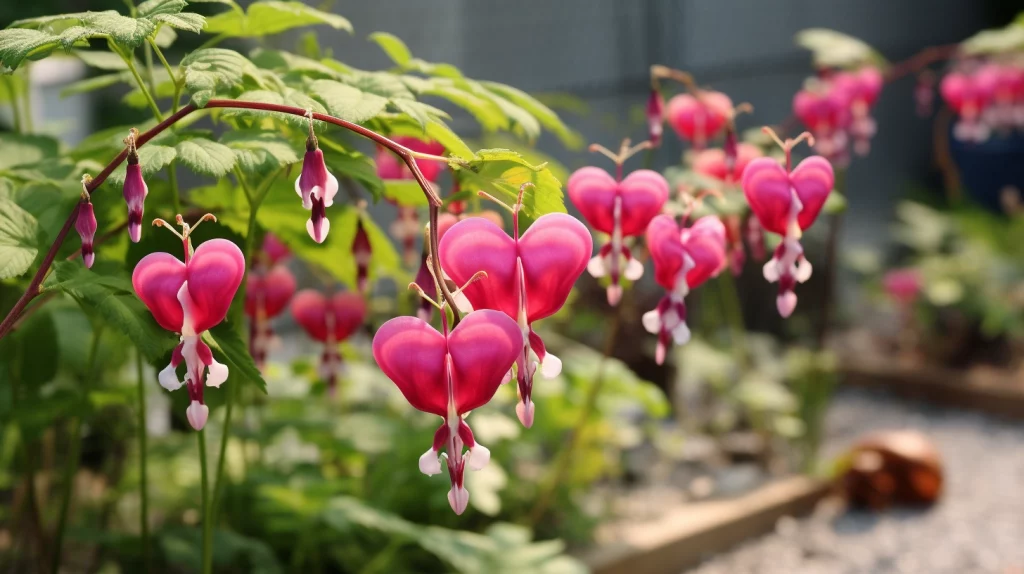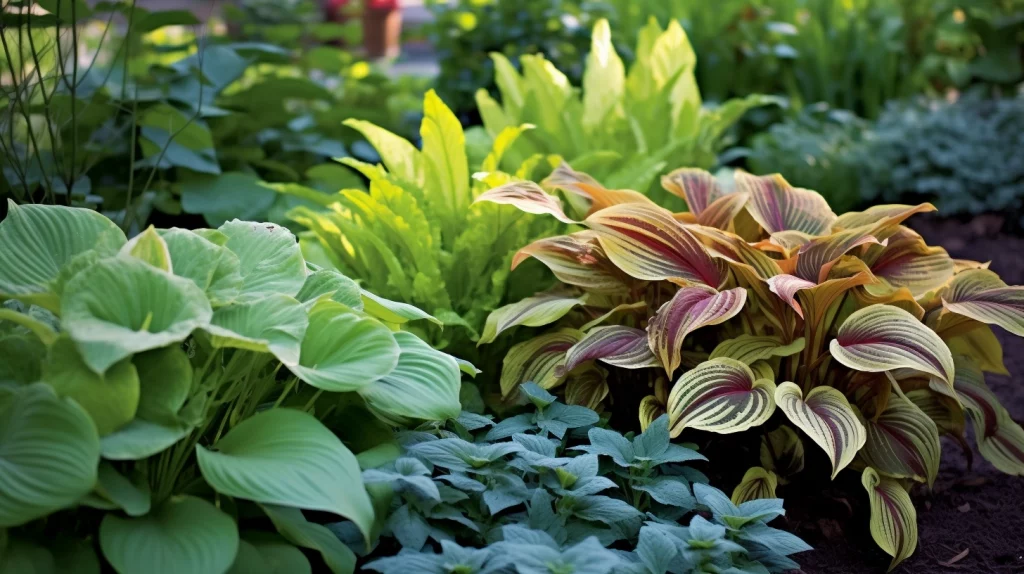Gardening enthusiasts often face the challenge of finding the right plants for those shady corners of their gardens. But fret not, for the world of shade perennials offers a plethora of vibrant and hardy plants that can bring life to these areas. From the lush foliage of Hostas to the heart-shaped leaves of Siberian Bugloss, shade perennials are the unsung heroes of many gardens.
In this guide, we’ll delve into the world of shade perennials, exploring their varieties, growing conditions, and how Oregon Super Soil can enhance their growth and health.
Here’s the expanded section with additional information for each plant and two more plants added to the list:
Shade perennials are a diverse group of plants that thrive in areas with less sunlight. They are perfect for filling in dark corners of your garden, under the canopy of large trees, or on the north side of buildings where sunlight is minimal.

Known for their lush foliage, Hostas are a staple in many shade gardens. They come in a wide range of sizes, leaf shapes, and colors, providing endless possibilities for garden design. Hostas are low-maintenance plants that prefer well-drained soil. They can tolerate a variety of soil types, including clay, loam, and sandy soil. Check out our Hostas collection for inspiration.


With their delicate fronds, Ferns can add a touch of elegance to any shady spot. They are generally easy to care for and can thrive in a variety of soil conditions. Ferns prefer a slightly acidic soil and consistent moisture. They can be used as ground cover or as a backdrop for other shade-loving plants.


Astilbe is prized for its feathery, plume-like flowers that come in shades of white, pink, and red. It’s a great choice for adding a splash of color to your shade garden. Astilbe prefers moist, well-drained soil and can tolerate a range of pH levels. It’s a great choice for borders or as a focal point in a shade garden.


This plant gets its name from its heart-shaped flowers, which dangle elegantly from arching stems. Bleeding Hearts can add a romantic touch to your garden. They prefer well-drained soil and can tolerate a range of pH levels. Bleeding Hearts are perfect for creating a woodland garden effect.


This plant is known for its heart-shaped leaves and small, forget-me-not-like flowers. It’s a great ground cover option for shady areas. Siberian Bugloss prefers moist, well-drained soil. It’s a great choice for adding texture and color to your shade garden.


Lily of the Valley is a popular choice for shade gardens due to its sweetly scented, bell-shaped flowers. It prefers well-drained, slightly acidic soil. Lily of the Valley can spread quickly, making it a good choice for ground cover.


Solomon’s Seal is known for its arching stems and white, bell-shaped flowers. It prefers well-drained soil and can tolerate a range of pH levels. Solomon’s Seal is a great choice for adding height and structure to your shade garden.
Shade perennials are a diverse group of plants that have adapted to thrive in areas with less direct sunlight. These areas can be under the canopy of large trees, on the north side of buildings, or any place where sunlight is filtered or indirect. The amount of shade they can tolerate can vary between species, with some preferring dappled shade and others thriving in deep shade. It’s always a good idea to check the specific light requirements of each plant when planning your shade garden.
In addition to light requirements, the soil in which these plants grow plays a significant role in their health and vitality. Most shade perennials prefer well-draining soil that is rich in organic matter. They need soil that can retain moisture without becoming waterlogged and provide a steady supply of nutrients for their growth.
This is where Oregon Super Soil comes into play. Made from a blend of aged Douglas Fir bark fines, plant compost, and other organic ingredients, Oregon Super Soil is more than just dirt – it’s a living soil teeming with beneficial microorganisms that help break down organic matter and make nutrients more available to plants.
One of the unique characteristics of Oregon Super Soil is its ability to thrive in the same conditions as shade perennials. Just like these plants, the microorganisms in Oregon Super Soil do better in the shade than in direct sun. The cooler, moister conditions of a shade garden provide an ideal environment for these microorganisms to flourish, leading to a healthier, more vibrant soil.
Moreover, the organic matter in Oregon Super Soil helps improve the soil structure, enhancing its ability to retain moisture and nutrients. This is particularly beneficial for shade perennials, which often grow in areas where the soil can be depleted of nutrients due to the presence of large trees or buildings.
In essence, Oregon Super Soil and shade perennials are a perfect match. By providing a living, nutrient-rich soil that thrives under the same conditions as shade perennials, Oregon Super Soil can help these plants reach their full potential, bringing beauty and life to those shady corners of your garden.


Before planting, it’s important to prepare the area. Clear it of weeds and debris, then loosen the soil. Add a layer of Oregon Super Soil to improve its fertility and drainage.
When planting, dig a hole that is twice as wide and the same depth as the root ball of your plant. Place the plant in the hole, making sure the top of the root ball is level with the soil surface. Backfill the hole with soil, firming it gently around the plant.
After planting, water your shade perennials regularly, especially during dry periods. However, be careful not to overwater, as this can lead
to root rot. A layer of mulch around your plants can help retain moisture, suppress weeds, and regulate soil temperature.
To promote healthy growth, apply a balanced top soil amendment to existing plants. Oregon Super Soil is a great choice as it’s rich in organic matter and provides a steady release of nutrients.
For an extra boost, consider using Root Enhancer. This product contains a blend of mycorrhizal fungi, which form beneficial relationships with plant roots, increasing their ability to withstand environmental stressors, protect against soil pathogens, and improve nutrient uptake.


Prune your shade perennials in the late winter or early spring to remove dead or damaged growth and to maintain their shape. Keep an eye out for common pests and diseases that can affect shade perennials, such as slugs, snails, and powdery mildew. Use appropriate treatments as needed.
Growing shade perennials can come with its own set of challenges. However, with the right knowledge and tools, these can be easily managed. Here are some common issues you might encounter and how to address them:
Shade perennials, like any other plants, can be susceptible to pests and diseases. Slugs and snails are common pests that are attracted to the moist, cool conditions of a shade garden. Diseases such as powdery mildew can also affect shade perennials.
To prevent these issues, ensure good air circulation around your plants and avoid watering late in the day as this can create a damp environment that encourages disease. If pests or diseases do occur, use appropriate treatments as needed. Check out our product category for a range of organic pest control options.
Shade perennials generally prefer well-draining soil that is rich in organic matter. However, soil conditions can vary greatly depending on your garden’s location and the presence of large trees or buildings. Poor drainage or nutrient deficiencies can affect the growth of your shade perennials.
To address these issues, consider using Oregon Super Soil. This living soil is rich in organic matter and beneficial microorganisms that help improve soil structure and nutrient availability. Visit our shop to explore our range of soil products.
Ensuring your shade perennials get the right amount of light can be a challenge, especially in gardens with varying light conditions. While these plants are adapted to lower light levels, they still need some light to photosynthesize and grow.
Monitor your garden’s light conditions throughout the day and seasonally, as the amount of shade can change. If necessary, consider moving your plants to a more suitable location or using shade cloths to adjust the light levels.
In a garden, plants compete with each other for resources such as light, water, and nutrients. Shade perennials, especially smaller ones, can struggle if they’re planted near larger plants like trees that can overshadow them and take up a lot of resources.
To manage this, ensure proper spacing between your plants and consider using companion plants that can coexist well with your shade perennials. Our learn about gardening section provides more information on companion planting.
Caring for shade perennials during the winter can be a challenge, especially in regions with harsh winters. Some shade perennials are deciduous and will lose their leaves in the winter, while others are evergreen and need protection from freezing temperatures.
To protect your plants during the colder months, consider using mulch to insulate the soil and protect the plant roots. For evergreen perennials, consider using frost cloths or other protective measures during extreme cold.
Remember, every garden is unique and what works for one might not work for another. The key is to observe your garden, understand its conditions, and adapt your gardening practices accordingly. With the right care and the help of Oregon Super Soil, your shade perennials can thrive and become a highlight of your garden.
While shade perennials are primarily grown for their ornamental value, some, like Hostas, have edible parts that can be harvested and used in cooking. Always research the specific needs of your plants to ensure they thrive.


Shade perennials are a wonderful addition to any garden, bringing color and life to areas that other plants may struggle. With the right care and the help of Oregon Super Soil, your shade perennials can thrive and become a highlight of your garden.
For more gardening tips and advice, check out our Green Thumb Guide or visit our shop to explore our range of products. Happy gardening!
For more information on shade perennials and gardening, you can visit the following resources:
Super Soil Starter Kit Start your organic gardening journey with...
Unleash your farm's full potential with the 2-yard Super Sack...
7g Oregon Super Soil Root Enhancer Introduce your plants to...
28g Root Enhancer Oregon Super Soil Root Enhancer is your...
© 2023 All rights reserved
Oregon Super Soil